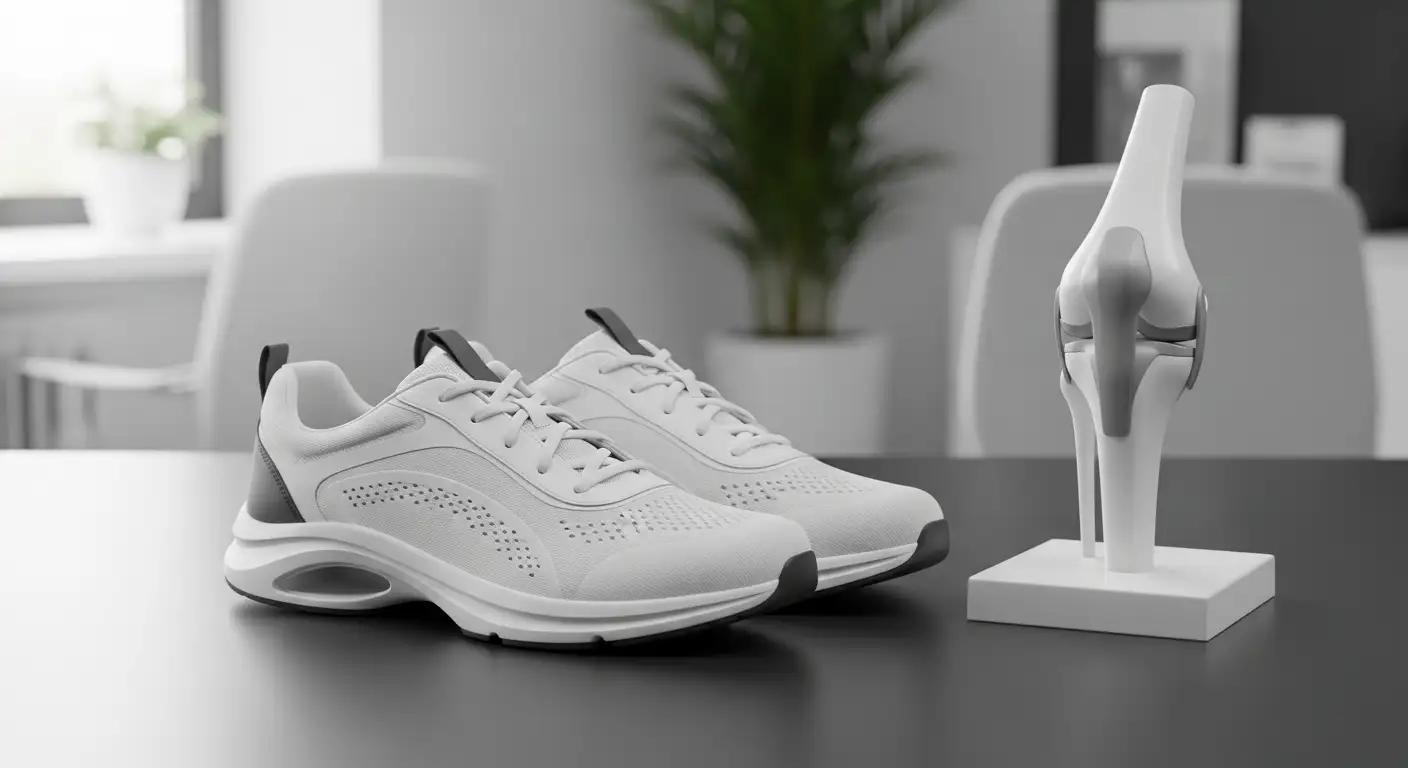Understanding Severe Knee Osteoarthritis
Severe knee osteoarthritis is a common condition that affects a significant portion of the population, especially as they age. It is characterized by damage to the knee joint due to wear and tear, often leading to pain, stiffness, and restricted movement. In this section, we delve into the causes, risk factors, symptoms, and diagnosis of this debilitating condition.
Causes and Risk Factors
Knee osteoarthritis is primarily caused by the gradual wear and tear of the knee joint over time. However, certain risk factors can increase the likelihood of developing this condition. According to the Cleveland Clinic, approximately 46% of people will develop osteoarthritis of the knee during their lifetimes.
Women are more likely than men to develop this condition, and most people develop it after age 40. However, factors such as injury or genetics can cause it to occur earlier. Additionally, it's worth noting that severe knee osteoarthritis is one of the most common reasons for knee replacement surgery due to the significant joint damage it causes.

Symptoms and Diagnosis
The most common symptom of knee osteoarthritis is knee pain, which can restrict activities such as jogging, running, climbing stairs, or kneeling. Additionally, the condition can make the knees feel stiff, swollen, and can alter the shape of the knee joint over time [2].
Diagnosing osteoarthritis of the knee typically involves a physical examination by healthcare providers. This may be complemented by tests, including imaging studies such as X-rays or MRIs. These tests help to assess the extent of damage to the knee joint and guide the appropriate treatment strategies.
Understanding the causes, symptoms, and diagnosis of severe knee osteoarthritis is crucial in managing the condition effectively. In the following sections, we will explore various treatment options and lifestyle modifications that can aid in managing knee osteoarthritis.
Treatment Options for Knee Osteoarthritis
Management of severe knee osteoarthritis involves a range of treatment options, including both non-surgical and surgical interventions. The goal of these treatments is to reduce pain, improve mobility, and enhance the quality of life for those suffering from this condition.
Non-Surgical Treatments
Non-surgical treatments form the first line of intervention for managing knee osteoarthritis. These treatments aim to alleviate the symptoms without resorting to invasive procedures. According to the Cleveland Clinic, healthcare providers typically attempt non-surgical treatments before considering surgical options.
Emerging treatments for knee osteoarthritis include Platelet-rich plasma (PRP) injections and Mesenchymal stem cells (MSCs) that involve using the patient's own cells to promote healing and reduce inflammation in the knee joint. A review involving Maci, autologous cultured chondrocytes, showed that over 87% of the participants had an improvement in symptoms over 2 years.
Experimental procedures like water-cooled radiofrequency ablation, aimed at disabling the nerves causing knee pain by heating them, are also being explored. However, studies on its efficacy are limited to small groups of people [3].
Surgical Interventions
For more severe cases of knee osteoarthritis, surgical interventions may be necessary. Severe knee osteoarthritis is one of the most common reasons for knee replacement surgery due to joint damage caused by wear-and-tear arthritis.
Knee osteotomy is a procedure that involves removing or adding a wedge of bone in the shinbone or thighbone to address arthritis damage that causes the knee to bow inward or outward.
Another common surgical procedure is knee replacement surgery, where an artificial knee joint with metal caps for the thighbone and shinbone, along with high-density plastic to replace damaged cartilage, is used. These artificial parts are referred to as prostheses.
Choosing the right treatment option depends on the severity of the osteoarthritis, the patient's overall health, and their personal preferences. It's essential to discuss all available options with a healthcare provider to make an informed decision.
Lifestyle Modifications for Managing Knee Osteoarthritis
In addition to medical treatments, lifestyle modifications can play a crucial role in managing the symptoms of severe knee osteoarthritis. These modifications primarily involve exercise and weight management, along with various complementary therapies.
Exercise and Weight Management
Physical activity and low-impact exercises can be beneficial for individuals dealing with knee osteoarthritis. They can help strengthen the muscles around the joint, increase blood flow to the joint, and promote joint regeneration. Activities such as walking, bicycling, and water aerobics can improve endurance and strengthen the muscles around the affected joint, potentially reducing pain and improving overall mobility (Mayo Clinic, Arthritis Society Canada).
Weight management is also a crucial aspect of effective osteoarthritis management. Losing 10% of body weight can significantly reduce strain on the knees, which may decrease pain and potentially delay or prevent the need for surgery (Arthritis Society Canada).
Complementary Therapies
In addition to traditional exercise, practices such as Tai Chi and Yoga, which combine muscle strengthening, flexibility, and balance exercises, can be beneficial in managing osteoarthritis. These exercises can also promote relaxation and increase coping capacity.
Heat and cold therapy can also be beneficial for reducing pain and stiffness in osteoarthritis. Heat is ideal for relaxing sore muscles, while cold can provide short-term relief from inflammation (Arthritis Society Canada).
Finally, complementary and alternative medicine treatments, including certain supplements, have shown promise in managing osteoarthritis. However, it is advised to consult with a doctor before considering any alternative treatments [1].
In summary, lifestyle modifications, though not a replacement for medical treatments, can significantly contribute to managing the symptoms of severe knee osteoarthritis. Regular exercise, weight management, and complementary therapies can offer potential relief and improve quality of life for individuals living with this condition.
Emerging Treatments for Severe Knee Osteoarthritis
In the relentless pursuit of medical innovation, researchers are continually discovering new treatments for severe knee osteoarthritis. These experimental therapies aim to offer relief from the debilitating pain and inflammation associated with this condition. Here, we explore two promising treatments: platelet-rich plasma injections and mesenchymal stem cells, among other therapies.
Platelet-Rich Plasma Injections
One emerging treatment for severe knee osteoarthritis is platelet-rich plasma (PRP) injections. This technique involves using the patient's own cells to promote healing and reduce inflammation in the knee joint. PRP is a concentration of platelets, which can boost the body's healing process. When injected into the knee, PRP can help to alleviate the pain and stiffness associated with osteoarthritis. While this treatment is promising, more research is needed to fully understand its long-term effects and potential benefits.
Mesenchymal Stem Cells and Other Therapies
Mesenchymal stem cells (MSCs) are another emerging treatment for knee osteoarthritis. These cells have the potential to differentiate into a variety of cell types, including cartilage cells, which can help to repair damaged areas in the knee. A review published in 2016 in BMC Musculoskeletal Disorders concluded that MSC-based therapies offer an “exciting possibility” for treatment of knee osteoarthritis. However, further studies are needed to determine how they can best be used and how well they work.
Other treatments being investigated include bone marrow aspirate concentrate and autologous cultured chondrocytes. One such treatment, involving Maci (autologous cultured chondrocytes), showed that over 87% of participants had an improvement in symptoms over 2 years, compared with 68% from a different cartilage-stimulating procedure called microfracture.
Botox injections, which use botulinum toxin to ease muscle spasms, are also being explored to help treat joint pain, although the effectiveness is still inconclusive.
Water-cooled radiofrequency ablation is another experimental procedure aimed at disabling the nerves causing knee pain. Despite gaining attention, studies on its efficacy remain limited.
While these therapies show promise, they are still in the experimental stages, and more research is needed to confirm their efficacy and safety. For individuals suffering from severe knee osteoarthritis, keeping abreast of the latest research can provide hope and potential treatment options to discuss with their healthcare provider.
Complications and Management of Osteoarthritis
Living with severe knee osteoarthritis can present a variety of challenges. The condition can have significant effects on mobility and daily life, leading to complications that extend beyond joint pain. However, by understanding these potential complications, individuals can implement strategies to prevent or manage them effectively.
Effects on Mobility and Daily Life
Osteoarthritis can result in mobility and physical challenges, making joints stiff, weak, and painful over time. This can hinder daily activities and make patients prone to falls, thereby increasing the risk of injury.
Lack of movement due to osteoarthritis can also lead to reduced exercise, raising the risk of weight gain, high blood pressure, heart disease, diabetes, and high cholesterol. Medical intervention and lifestyle changes may be required to manage these conditions effectively.
In addition to the physical impact, osteoarthritis pain can lead to sleep problems, causing disruptions in sleep patterns, difficulty falling asleep, and waking up during the night due to pain. Inadequate sleep may exacerbate pain, increase the risk of depression, and worsen symptoms that limit mobility.
Strategies for Complication Prevention
Preventing complications involves a multi-faceted approach that includes medical treatment and lifestyle changes.
- Medical Treatment: It's crucial to work with healthcare professionals to manage osteoarthritis. This could involve medication, physical therapy, and in some cases, surgery.
- Lifestyle Changes: Regular physical activity can help maintain joint mobility and control weight. A balanced diet can also help manage weight and provide necessary nutrients for overall health.
- Pain and Sleep Management: Techniques such as cognitive behavioral therapy, meditation, and good sleep hygiene can help manage pain and improve sleep quality.
- Fall Prevention: Home modifications to prevent falls, such as removing tripping hazards, installing handrails, and using non-slip mats, can be beneficial.
By taking proactive steps, it's possible to manage severe knee osteoarthritis and prevent complications from worsening over time. Always consult with healthcare professionals to create a personalized treatment plan.
References
[1]: https://www.mayoclinic.org/diseases-conditions/osteoarthritis/diagnosis-treatment/drc-20351930
[2]: https://my.clevelandclinic.org/health/diseases/21750-osteoarthritis-knee
[3]: https://www.webmd.com/osteoarthritis/ostearthritis-of-the-knee-degenerative-arthritis-of-the-knee
[4]: https://www.webmd.com/osteoarthritis/osteoarthritis-complications
[5]: https://www.healthline.com/health/osteoarthritis/complications-and-dangers





